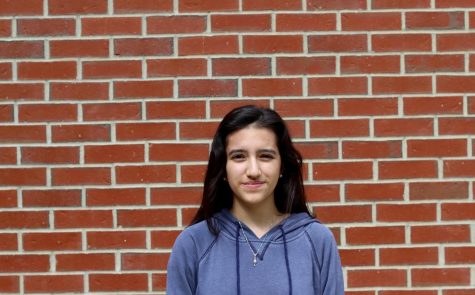Food drive incentives drive students to donate
Juice boxes fill history teacher Nate Uttaro’s room. Uttaro gave students an extension if they brought in 100 packs of juice.
April 28, 2019
Every spring social studies teacher John Barry organizes a food drive, through the use of incentives, to help spread a sense of community. Although the exact number is unknown, the drive collects too many items to count for the Northborough and Southborough food pantries.
“We feel that we need to do the food drives to answer the community needs because we feel that we’re particularly positioned to supply food for the hungry,” Barry said.
Barry, who has been running the drive for around 26 years, sends out an email to the faculty with the items that local food pantries are in need of, asking them to choose an item and challenge their students to bring it in whatever way they feel is appropriate.
Oftentimes teachers will opt to provide incentives for their students in an attempt to make the drive more successful.
Math teacher Nancy Hart is offering homework passes to her students who bring in peanut butter and jelly, and foreign language teacher Jennifer Sousa is giving her classes a choice of homework passes or a munchkin party.
History teacher Gregory DeCosmo is also offering his students an incentive: a chance to earn half a test point, with a maximum of 10 points, for every can of Chef Boyardee or SpaghettiOs brought in. If his students collectively bring in 1,000 cans, he will offer them an outdoor break with drinks and snacks.
DeCosmo also provides an opportunity for students to participate even if they are not financially capable.
“The provision I included is that if for whatever reason they can’t donate, they can speak to me and I’ll give them small assignment and get the cans for their behalf,” DeCosmo said. “That way nobody’s left out and everybody can participate.”
Barry believes that offering students incentives greatly contributes to the success of the food drives.
“Usually our food drives are successful because of creative incentives,” Barry said. “We’ve always wondered what a food drive would be like if it wasn’t cleverly incentivized.”
DeCosmo, however, believes incentives are not necessarily needed for the drive to be successful.
“The incentive is not necessary, I think,” DeCosmo said. “In the classroom we established a culture of being able to understand community.”
Despite not having any extrinsic rewards, DeCosmo stated that his classes were able to successfully raise a lot for two other drives conducted previously this year.
“The students were very generous because they understood the magnitude of the situation,” DeCosmo said. “There were no points allotted. I just explained the situation, we talked about it, and then they responded.”
While many students are grateful for the opportunity to earn something in exchange, some, like sophomore Lucy McGlynn, do not feel that it should be necessary.
“We should want to make our community better,” McGlynn said. “We live here; we should want to make everything better without having something to motivate us.”












